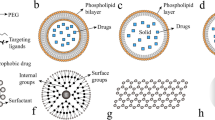Abstract
In continuation of earlier studies probing the cytotoxic properties of polymer-bound ferrocene against the HeLa cell line, the present communication presents the results of cell culture tests performed on a number of polymer–ferrocene conjugates against the LNCaP human metastatic prostate adenocarcinoma line. The water-soluble substrates are polyaspartamide carriers containing primary amine functions as side-group terminals to which the ferrocenylation agent, 4-ferrocenylbutanoic acid, is covalently bound (anchored) through N-acylation, the carboxamide groups so generated in the tether acting as the biofissionable links for release of the monomeric ferrocene compound from the conjugate in the lysosomal compartment. The carrier backbone structures are of the α, β-DL-peptide type preferred in our ongoing work, as this structural configuration allows ultimate chain degradation for efficacious excretion yet prevents fast and premature, α-peptidase-mediated “unzipping” of the peptidic chain. The screens are performed by exposing the selected conjugates 1–7 at various concentrations to cultured LNCaP cells in RPMI medium over a period of 7 days and assessing cell viability by a protein assay. From cell growth data relative to control, plotted against conjugate concentration, the IC50 values, expressed as metal concentrations required for 50% cell growth inhibition, are found to be in the narrow range of 1–10 μg Fe/ml. This compares well with earlier results obtained on selected ferrocene conjugates against the HeLa cell line and, more strikingly still, on analogous, previously tested conjugates containing the square-planar structural skeleton of the cisplatin-type anticancer drug system as the bioactive agent. The present findings, hence, should provide a healthy motivation for more extended studies of polymer-anchored ferrocenes in the biomedical realm.
Similar content being viewed by others
REFERENCES
G. Caldwell, M. G. Meirim, E. W. Neuse, and C. E. J. van Rensburg, Appl. Organometal. Chem. 12, 793 (1998).
G. Caldwell, E. W. Neuse, and C. E. J. van Rensburg, J. Inorg. Organomet. Polym. 7, 217 (1997).
P. Neri and G. Antoni, Macromol. Synth. 8, 25 (1982).
G. Caldwell, E. W. Neuse, and C. E. J. van Rensburg, Appl. Organometal. Chem. 13, 189 (1999).
M. G. Meirim, E. W. Neuse, and G. Caldwell, J. Inorg. Organomet. Polym. 7, 71 (1997).
J. Vlasák, F. Rypáček, and J. Drobník, J. Polym. Sci. Polym. Symp. 66, 59 (1979).
M. de L. Machado, E. W. Neuse, A. G. Perlwitz, and S. Schmitt, Polym. Adv. Technol. 1, 275 (1990).
E. W. Neuse, Macromol. Symp., in press.
W.-C. Shen, K. Beloussow, M. G. Meirim, E. W. Neuse, and G. Caldwell, J. Inorg. Organomet. Polym. 10, 51 (2000).
Author information
Authors and Affiliations
Rights and permissions
About this article
Cite this article
Caldwell, G., Meirim, M.G., Neuse, E.W. et al. Antiproliferative Activity of Polyaspartamide–Ferrocene Conjugates Containing the Biofissionable Carboxamide Function in the Anchoring Links. Journal of Inorganic and Organometallic Polymers 10, 93–101 (2000). https://doi.org/10.1023/A:1009475909111
Issue Date:
DOI: https://doi.org/10.1023/A:1009475909111




